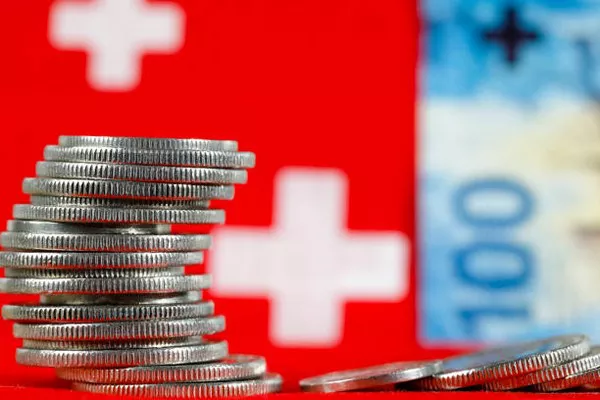Switzerland, renowned for its scenic landscapes, precision watches, and a robust financial system, also boasts a distinctive currency—the Swiss Franc. Over time, as currency designs evolve and security features advance, the need to exchange old Swiss Francs for their current counterparts arises. Whether you have stumbled upon a forgotten stash of vintage banknotes or inherited a collection, understanding where and how to exchange old Swiss Francs becomes paramount. In this comprehensive guide, we unravel the intricacies of navigating the exchange process, exploring avenues, considerations, and the historical context that makes the Swiss Franc a fascinating part of numismatic exploration.
The Swiss Franc: A Brief Historical Overview
1. Genesis and Stability:
The Swiss Franc (CHF), abbreviated as “SFr.” or “Fr.,” traces its roots back to the 19th century. Instituted in 1850, the Swiss Federal Coinage Act established the Swiss Franc as the official currency, unifying the diverse regional currencies that prevailed until then. The Franc’s stability and the Swiss economy’s resilience have contributed to its reputation as a safe-haven currency.
2. Denominations and Designs:
Over the years, the Swiss Franc has undergone various design changes and has featured prominent figures, landscapes, and cultural symbols on its banknotes. The issuance of new series, with enhanced security features, has been a periodic undertaking by the Swiss National Bank (SNB). Familiarizing oneself with the denominations and corresponding designs aids in distinguishing between old and current Francs.
Why Exchange Old Swiss Francs?
1. Security and Anti-Counterfeiting Measures:
The evolution of currency design often revolves around enhancing security features to thwart counterfeiting attempts. Old Swiss Francs may lack the sophisticated elements found in contemporary banknotes, making them susceptible to replication. Exchanging old notes ensures that the currency in circulation aligns with the latest anti-counterfeiting standards.
2. Transition to New Series:
Periodic updates in banknote design and security features lead to the issuance of new series. The Swiss National Bank, in its commitment to technological advancements, introduces updated notes with innovative elements. As older series gradually phase out, exchanging old Swiss Francs for current ones becomes imperative for seamless transactions.
Where Can I Exchange Old Swiss Francs?
1. Swiss National Bank:
The primary authority overseeing Swiss Franc issuance is the Swiss National Bank (SNB). While the SNB does not provide a direct exchange service for the public, it plays a crucial role in defining the validity of Swiss Franc banknotes. The SNB’s website serves as a valuable resource, offering guidelines on the recognition and handling of valid banknotes.
2. Commercial Banks:
Commercial banks across Switzerland typically offer currency exchange services. While many banks readily accept old Swiss Francs for exchange, it is advisable to check with the specific bank regarding their policies and any potential fees associated with the service. Some banks may require individuals to hold an account with them for such transactions.
3. Swiss Post:
Swiss Post, the national postal service of Switzerland, often provides currency exchange services at selected branches. Similar to commercial banks, Swiss Post may have varying policies and fees. Verifying the availability of exchange services at a local Swiss Post branch is recommended.
4. Online Platforms:
The advent of online platforms has facilitated currency exchange, providing individuals with convenient alternatives. While numerous online platforms offer currency exchange services, caution is advised. Opt for reputable platforms with secure transactions and transparent fee structures. Additionally, ensure that the platform accepts old Swiss Francs for exchange.
5. Numismatic and Currency Exchanges:
Numismatic and currency exchange services cater specifically to collectors and enthusiasts. These platforms may be more inclined to accept old Swiss Francs, especially if the notes hold historical or collector’s value. Researching reputable numismatic services and reaching out to them can be a fruitful avenue for those with unique or rare banknotes.
Considerations Before Exchanging Old Swiss Francs
1. Validity and Recognition:
Before initiating the exchange process, it is crucial to ensure that the old Swiss Francs in possession are valid and recognized by financial institutions. The Swiss National Bank provides resources to aid in the identification of valid banknotes, including security features and design elements.
2. Condition of Banknotes:
The physical condition of banknotes can influence their acceptance for exchange. While well-preserved notes are generally accepted, excessively damaged or mutilated currency may face challenges. Commercial banks and exchange services may have varying criteria regarding the acceptable condition of banknotes.
3. Exchange Rates and Fees:
Exchange rates and fees associated with currency exchange services can impact the value received. Different providers may offer varying rates and fee structures. It is advisable to compare rates and fees across banks, online platforms, and numismatic services to make an informed decision.
4. Collector’s Value:
For individuals holding old Swiss Francs with potential collector’s or numismatic value, exploring specialized numismatic services becomes pertinent. Some banknotes, especially those from discontinued series or featuring unique designs, may command a premium among collectors.
5. Local Policies:
Policies regarding the exchange of old Swiss Francs may vary among banks and financial institutions. Checking with the specific institution regarding their policies, documentation requirements, and any restrictions can streamline the exchange process.
See Also: Where Can I Buy Swiss Francs in the US?
Conclusion
Navigating the exchange of old Swiss Francs involves a blend of historical awareness, adherence to guidelines, and awareness of available avenues. Whether driven by the need to update currency to current security standards or the desire to explore the collector’s value of unique banknotes, individuals can embark on this journey with confidence.
As Switzerland continues to uphold its financial prowess and commitment to innovation, the Swiss Franc remains a tangible reflection of the nation’s economic stability. Exchanging old Swiss Francs is not merely a financial transaction; it is an engagement with the rich tapestry of Switzerland’s monetary history and the ongoing legacy of the Swiss Franc.


